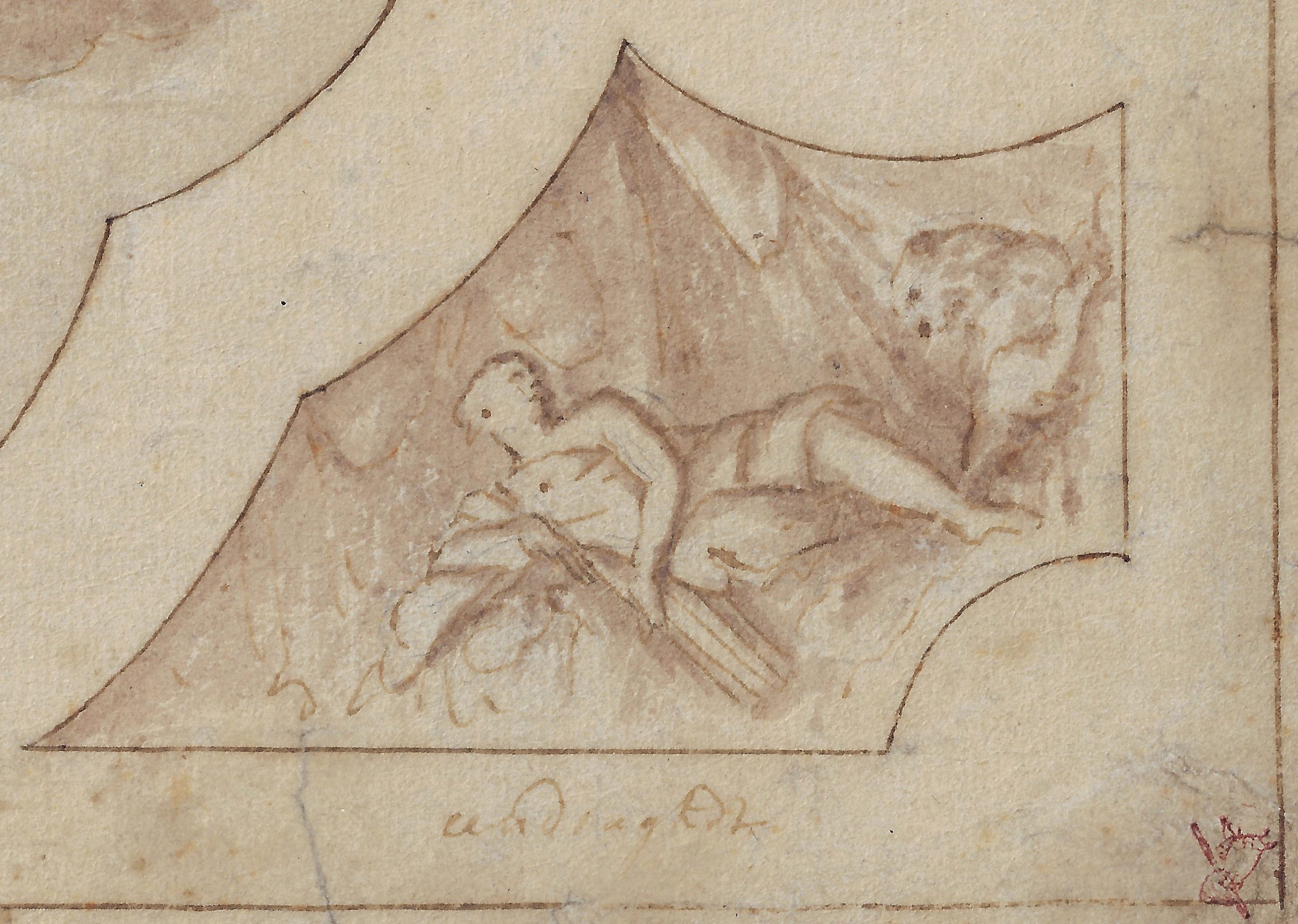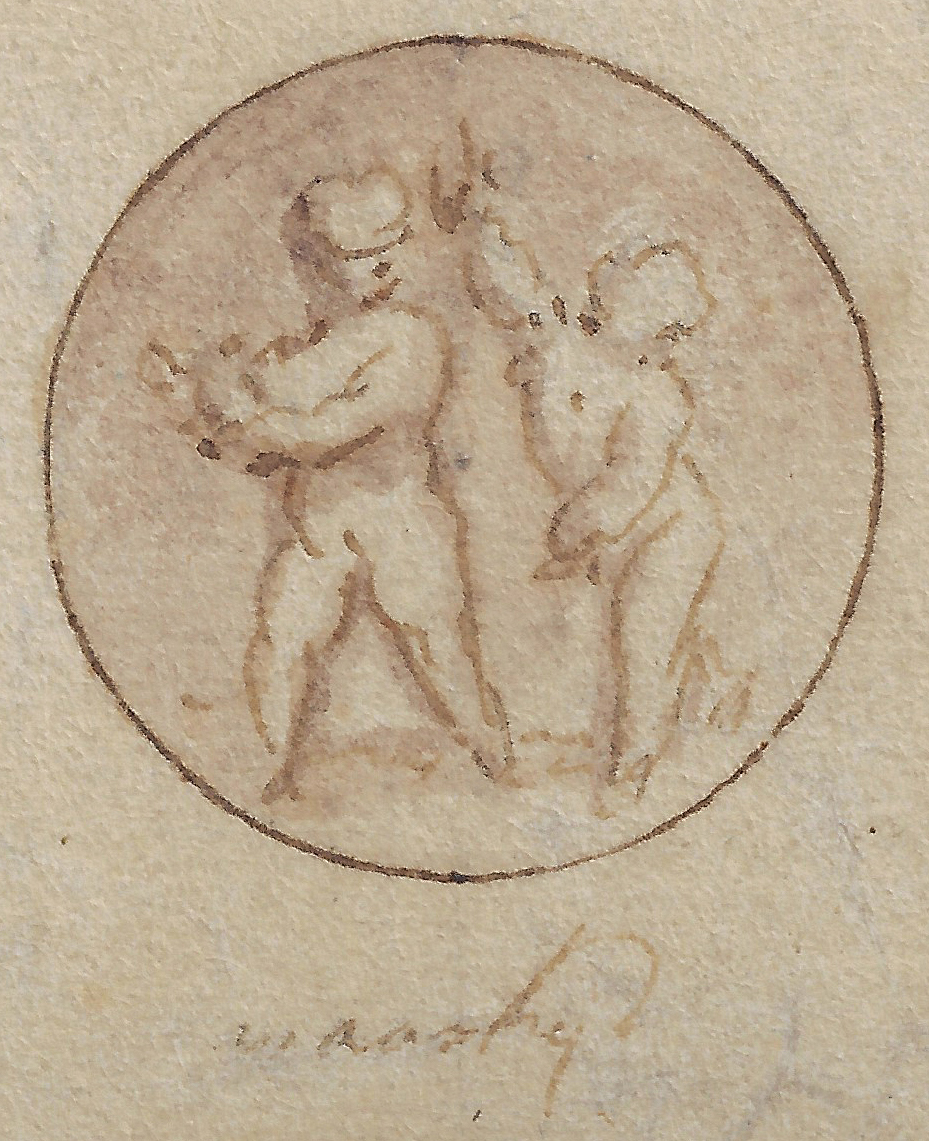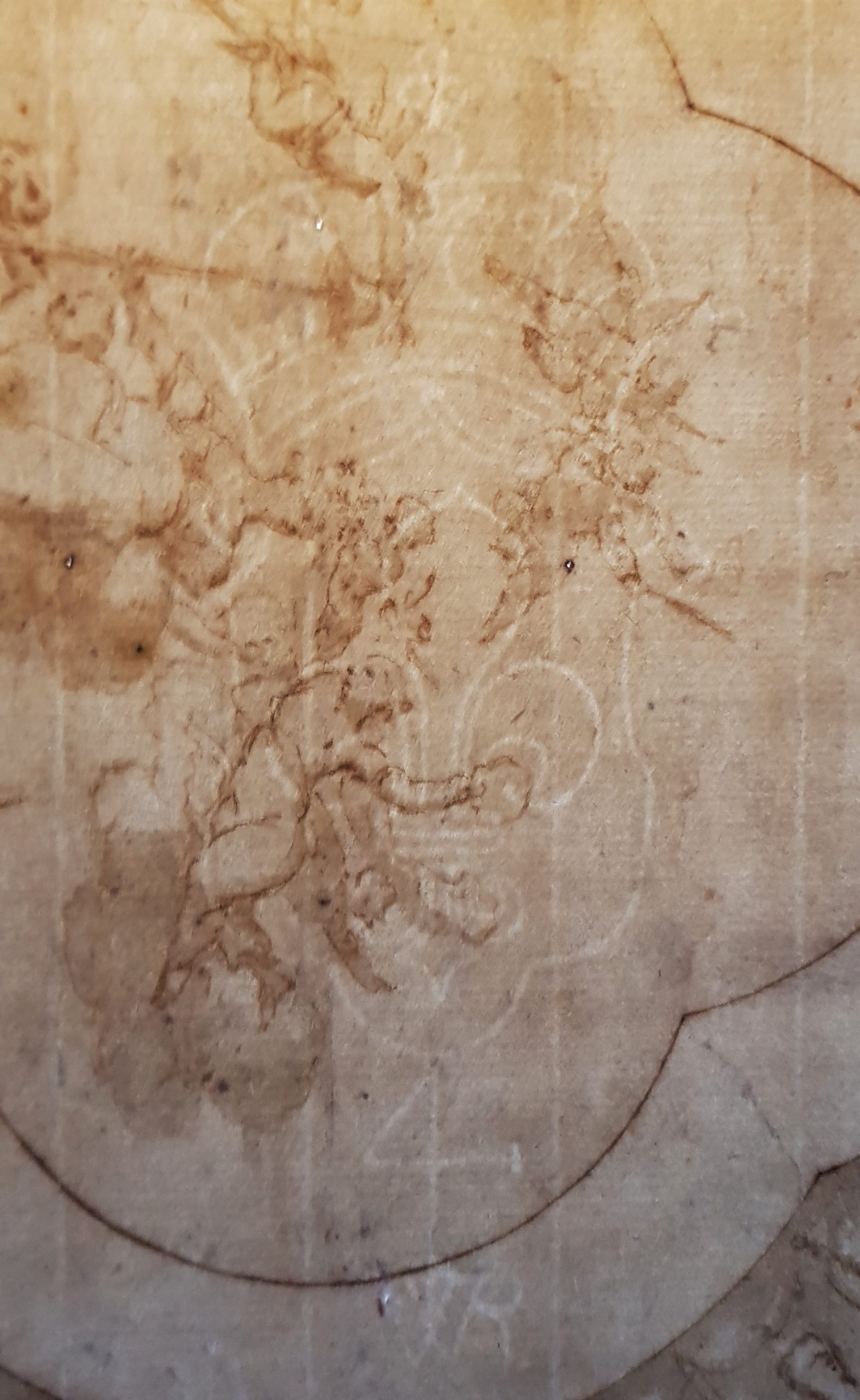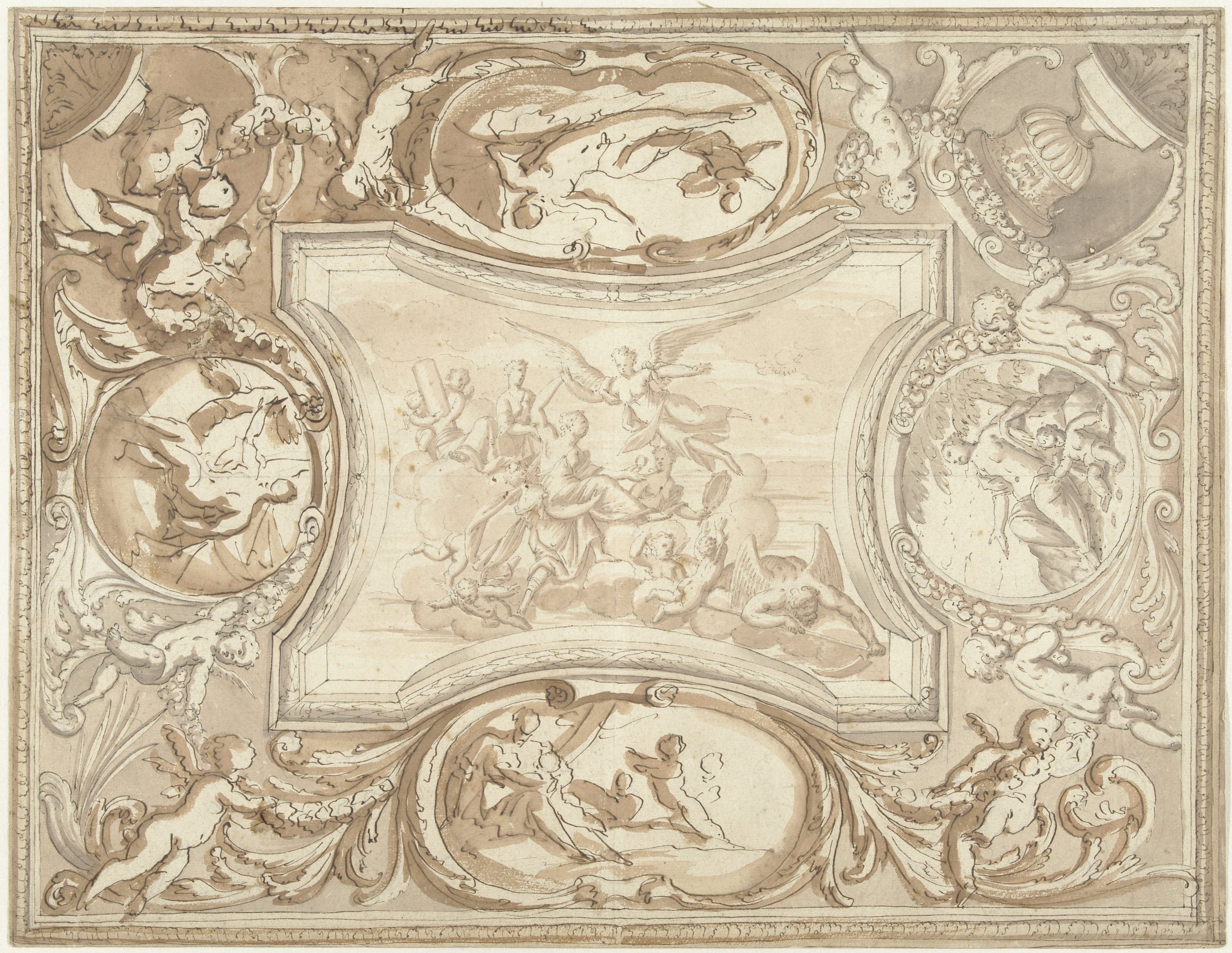MATTHAUS TERWESTEN (The Hague 1670 – 1757 The Hague)
Matthaus Terwesten (The Hague 1670 – 1757 The Hague)
Design for a Ceiling with a Personification of Peace
Pen and brown ink, brown-grey wash, watermark lily in crowned shield with letters WR underneath, 203 x 302 mm (8 x 11.9 inch)
Inscribed ‘de vrede kroont de altijd deurende vrijhijd’ (lower centre) and ‘eendragdt’, ‘waarhijd’, ‘voorzichtighijd’, ‘stantvastighijd’ and ‘getrouw’
Provenance
~ Lodewijk Houthakker (1926–2008), Amsterdam (Lugt 3893)
~ Private collection, Belgium
Published
Peter Führing, Design into Art. Drawings for Architecture and Ornament, 1989, volume I, p. 292, cat. no. 414, repr.
***
Terwesten was born in The Hague to parents of German origin – his father, Hans Jacob Terwesten, also known as Zurwesten, was originally from Augsburg, while his mother Catharina came from Berlin.1 They had married in The Hague in 1648, where Hans Jacob worked as a goldsmith. Matthaus was originally taught by his father, who taught him the art of engraving, goldsmithing and wax modelling. This was followed by two years of apprenticeship with the history painter Nicolaes Willingh, who became court painter to the Great Elector in Berlin in 1667.Matthaus was further taught by his elder brother Augustinus Terwesten (1649–1711) and by Willem Doudijns and Daniel Mijtens in The Hague.
Around 1695 Terwesten travelled to Berlin, to visit his family, and continued to Rome. His journey is exceptionally well documented, Terwesten travelled through Leipzig, Nuremberg, Augsburg, Florence and Siena to Rome, where he stayed for a considerable period of time and joined the Bentveughels, taking the name of Aquila (Eagle). On his return, he travelled through Loreto, Bologna, Ferrara, Venice and Vienna. In Italy Terwesten studied the works of the great masters of the Renaissance and of contemporary painters.
He spent the first decade of the eighteenth century working in The Hague, where he painted many decorative schemes, which were fashionable during the period, including the ceiling of the “Koepel van Fagel” (Fagel’s Cupola) on the Noordeinde. In 1710 he returned to Berlin, where he was appointed court painter by Frederick I of Prussia, who also appointed him as professor at the Berlin academy, the Königliche Akademie der Künste. He later returned to The Hague. His pupils included Jan van Gool, Andries Storck, and his sons Augustinus II and Pieter Terwesten. Decorative paintings that are still in situ can be found in the Stadhuis aan de Groenmarkt in The Hague (1736),2 and in the Snouck van Loosenhuis, Enkhuizen (1742).3
Several dozen drawings by Mattheus Terwesten are currently known. They are mostly in museum collections, including the Herzog Anton Ulrich-Museum, Braunschweig, the Boijmans Van Beuningen Museum, Rotterdam, the Musée des Beaux Arts, Valenciennes and the Graphische Sammlung Albertina, Vienna. A fairly large group is preserved in the Rijksprentenkabinet, Amsterdam, and our drawing can for instance be compared to a ceiling design in this collection (fig.).4 Terwesten only concentrated on the decorative paintings, a personification of Peace in the central large compartment, surrounded by personifications of Unity, Truth, Carefulness, Steadfastness and Faithfulness. The paintings on canvas would be inserted in frameworks either of carved and painted wood profiles, or of stuccowork. Drawings like these would have been supplied to prospective clients and could also have been used during the execution process.
Terwesten’s authorship has kindly been confirmed by Drs Charles Dumas.5
1. For the artist, see C.J.A. Wansink, ‘De decoratieve schilderkunst van Mattheus Terwesten, een Haagse meester uit de achttiende eeuw’, Oud Holland,104, 1990, pp. 270-292 and Renate Colella (ed.), Götter und Helden für Berlin: Gemälde und Zeichnungen von Augustin und Matthäus Terwesten, exh. cat. Berlin (Schloss Charlottenburg) 1995-96.
2. J.C. van Herpel, Het oude Raadhuis van 's-Gravenhage, The Hague 1975-1979, vol. I, pp.405-406, fig.378 and vol. II, pp. 833-839, figs. 882-889.
3. E.F. Koldeweij, ‘Het Snouck van Loosenhuis te Enkhuizen. De instandhouding van een laatste wil’, Jaarboek Monumentenzorg 1999, Zwolle/Zeist 1999, pp.152-158.
4. Pen and wash in grey and brown, 229 x 386 mm, inv. no. RP-T-2000-3; http://hdl.handle.net/10934/RM0001.COLLECT.359874
5. Email correspondence, 1 July 2022.





